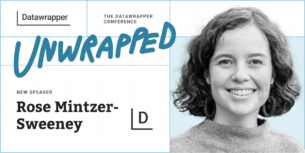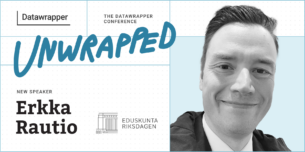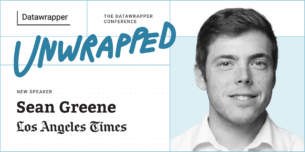Ceren Dolma, freelance cartographer, will speak about mapping narratives with Datawrapper

We’re excited to announce that freelancer Ceren Dolma will speak at our Unwrapped conference about “Visualizing ‘Place’ with Datawrapper.” If you’re curious about our locator map feature, watching this talk is a great place to start.
Ceren Dolma is a self-employed cartographer and a data visualization designer. Transitioning from a full-time consultancy role to being a freelancer, she is constantly working on learning new tools and stretching those tools’ capabilities to meet her projects’ needs. She is a Datawrapper beginner and has begun using its cartographic features as a part of her 30-Day Map Challenge contributions in 2022 and 2023.
Time to ask her some questions:
Ceren, what will you talk about?
When we look at a map to navigate ourselves from point A to point B, we all see the same visual. However, our experiences differ. When I wanted to create a counter-cartographic visualization of my own experience of navigating Belfast as a young immigrant woman, I came across many tools that Datawrapper offers or works in conjunction with to customize and fine-tune visualizations. In this talk, I will walk through the process of creating “I want to go to the American Bar, but… public transit fails me” using custom JSONs and annotations. My hope for this talk is to leave you curious to explore Datawrapper’s functionalities to tell your own experiences of place, and maybe even bring it to newsrooms, workplaces, or research groups.
Ceren: "As a cartographer who is very interested in counter-mapping (for those who haven’t heard the term before, I’d roughly define it as mapping against the status quo), I can’t go without mentioning this map about my experience of getting to my favorite bar. But I'll explain more about that in my talk!"
Why did you start using Datawrapper, and what has changed since then?
Initially I started using Datawrapper out of personal curiosity to explore its mapmaking capabilities. Fairly quickly, I also started to use it as a data visualization tool because you can get clean and professional-looking visualizations really quickly, and there are very few barriers to entry. Nowadays, whether for a personal project or a work-related one, quite often I will start by throwing in my data into Datawrapper and exploring what it looks like with preliminary visualizations. Sometimes I finish everything right there, without further tweaking and refining.
Other times, when I might want to have more control, I might move it to other tools like R and Adobe Illustrator, though those tools have higher barriers to entry.
What's your guiding principle when working on data visualizations?
Typically, my aim when creating data visualizations is to tell a story or get a point across. Because of that aim I always ask myself how the choices I am making support my intended message. This becomes an anchor when I'm deciding what type of chart to use, how many variables to include, how to visualize each of those variables, and more.
Another consideration I keep coming back to is the audience. How can I make sure, to the best of my ability, that the audience received my intended message? This becomes especially relevant when deciding whether to use more traditional approaches or experiment with different visualization techniques, or how much explanatory text is needed in order to assist the viewer.
What's your favorite Datawrapper feature?
My favorite Datawrapper feature is the ability to interact with and edit data during the upload process. Especially when working with global spatial data at a country level, it's common to have missing data from some countries, or the name of the country will be spelled slightly differently based on your data sources. Datawrapper is great at highlighting data that doesn’t match the countries in their basemaps and allows you to edit it right there at that moment instead of having to go back and edit the source data.
We're looking forward to Ceren's talk at Unwrapped! Until then, you can find more about her on LinkedIn , X, and her website. To sign up for Unwrapped and hear Ceren and other great speakers, visit our conference website.




Comments